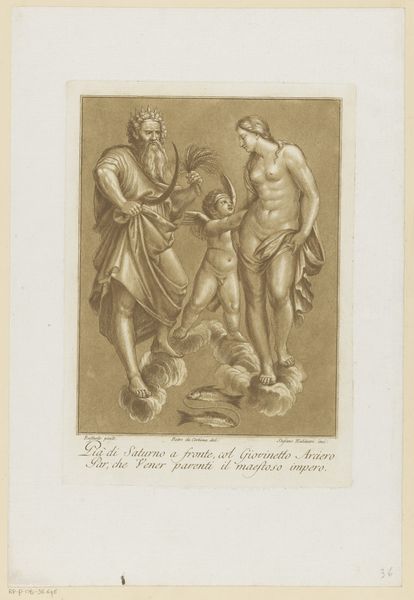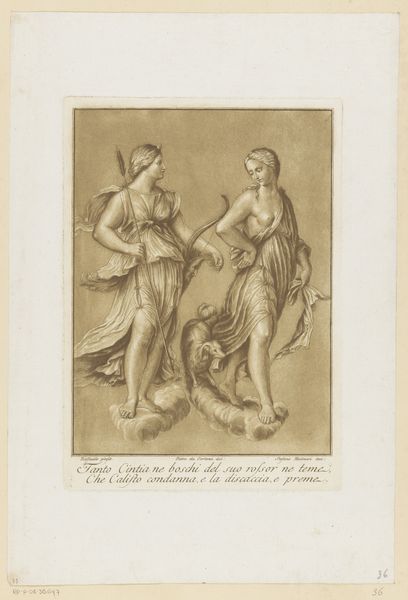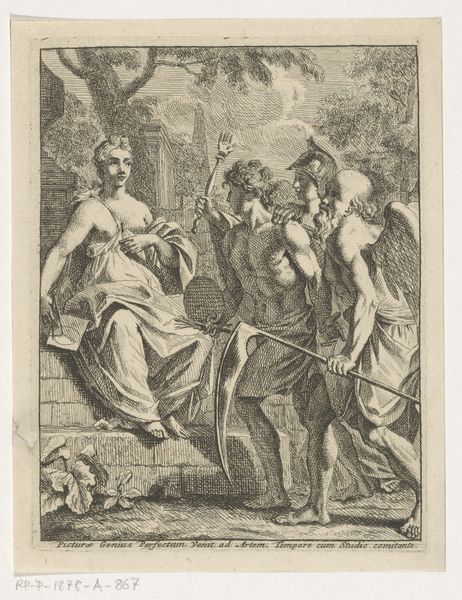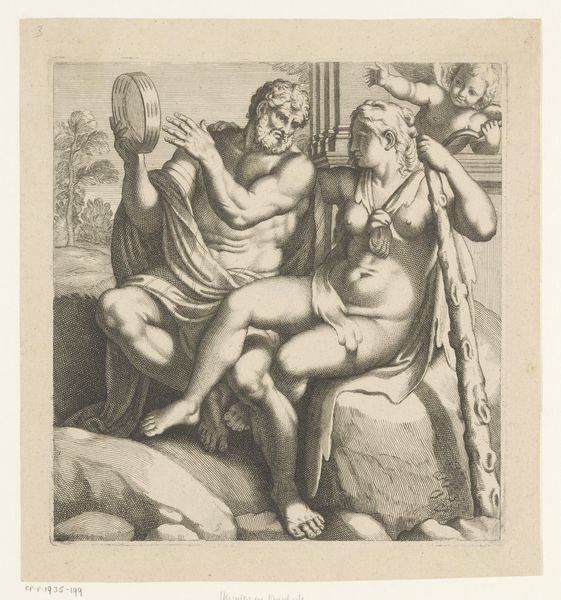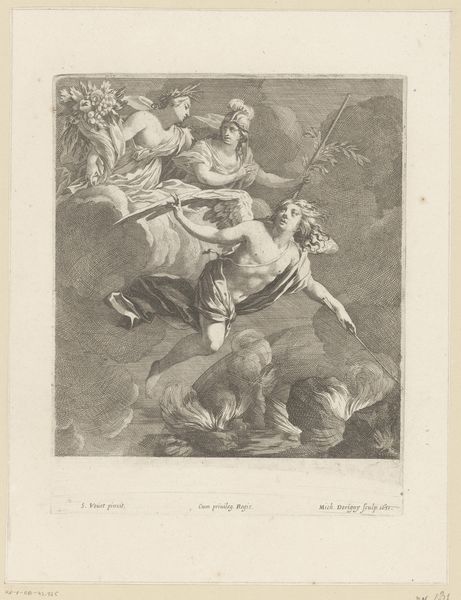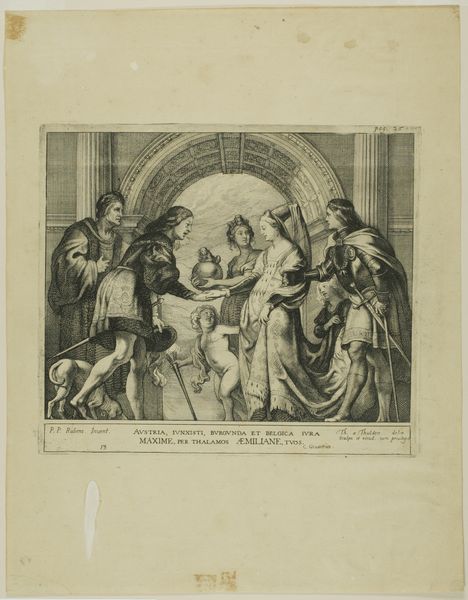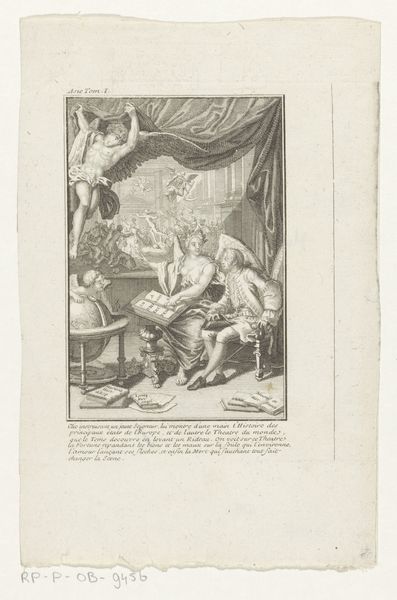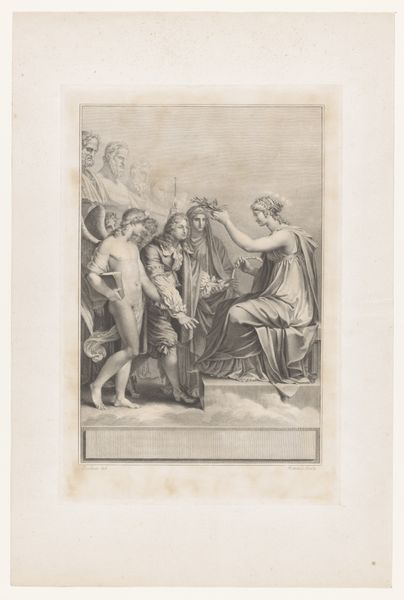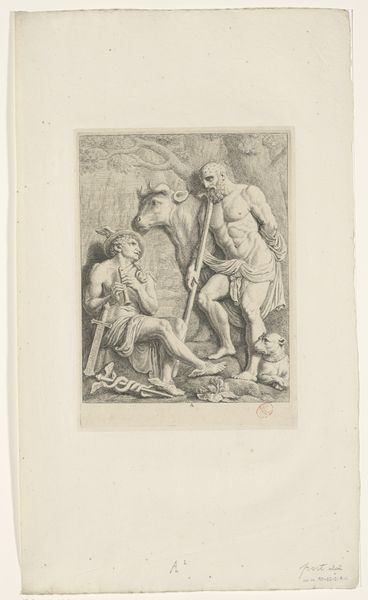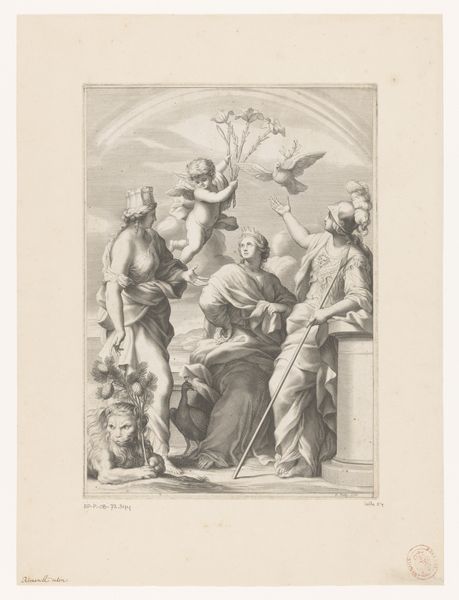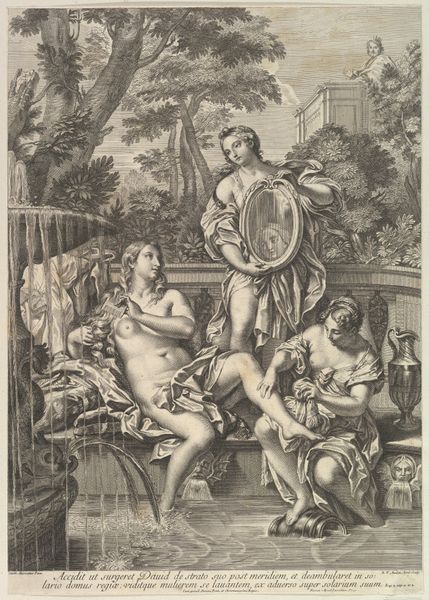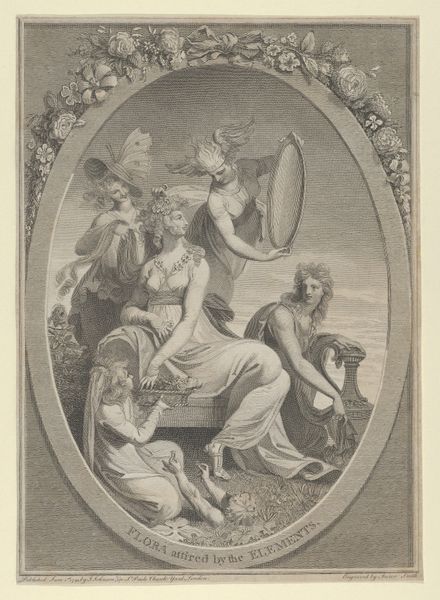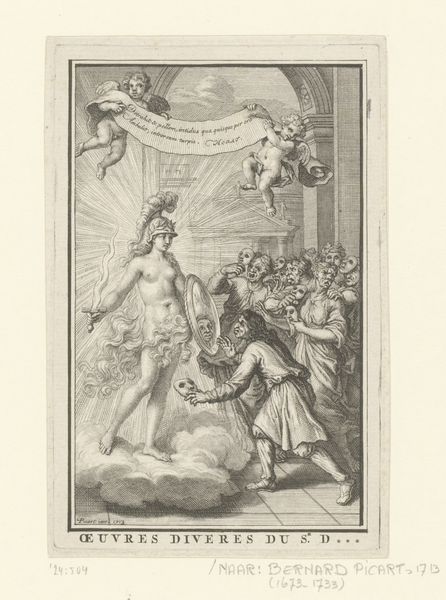
Dimensions: height 299 mm, width 224 mm
Copyright: Rijks Museum: Open Domain
This is Stefano Mulinari’s rendition of Jupiter and Europa, rendered in pen and brown ink in 18th century Italy. It depicts Jupiter in the guise of a bull abducting Europa, a Phoenician princess. The visual codes here draw on classical mythology, but the work also speaks to the social and cultural context of its time. The 18th century was an era of grand tours, where wealthy Europeans, particularly the British, traveled to Italy to absorb its art and culture. Artists like Mulinari catered to this market, producing works that referenced classical themes, but also reflected contemporary tastes. The institutional history of art also plays a role here. Academies of art were becoming increasingly influential, shaping artistic training and taste. Mulinari's work reflects the academic emphasis on draftsmanship and classical themes. To fully understand this work, we can turn to period travelogues, art treatises, and auction records, all helping us to understand art as something shaped by its social and institutional context.
Comments
No comments
Be the first to comment and join the conversation on the ultimate creative platform.
